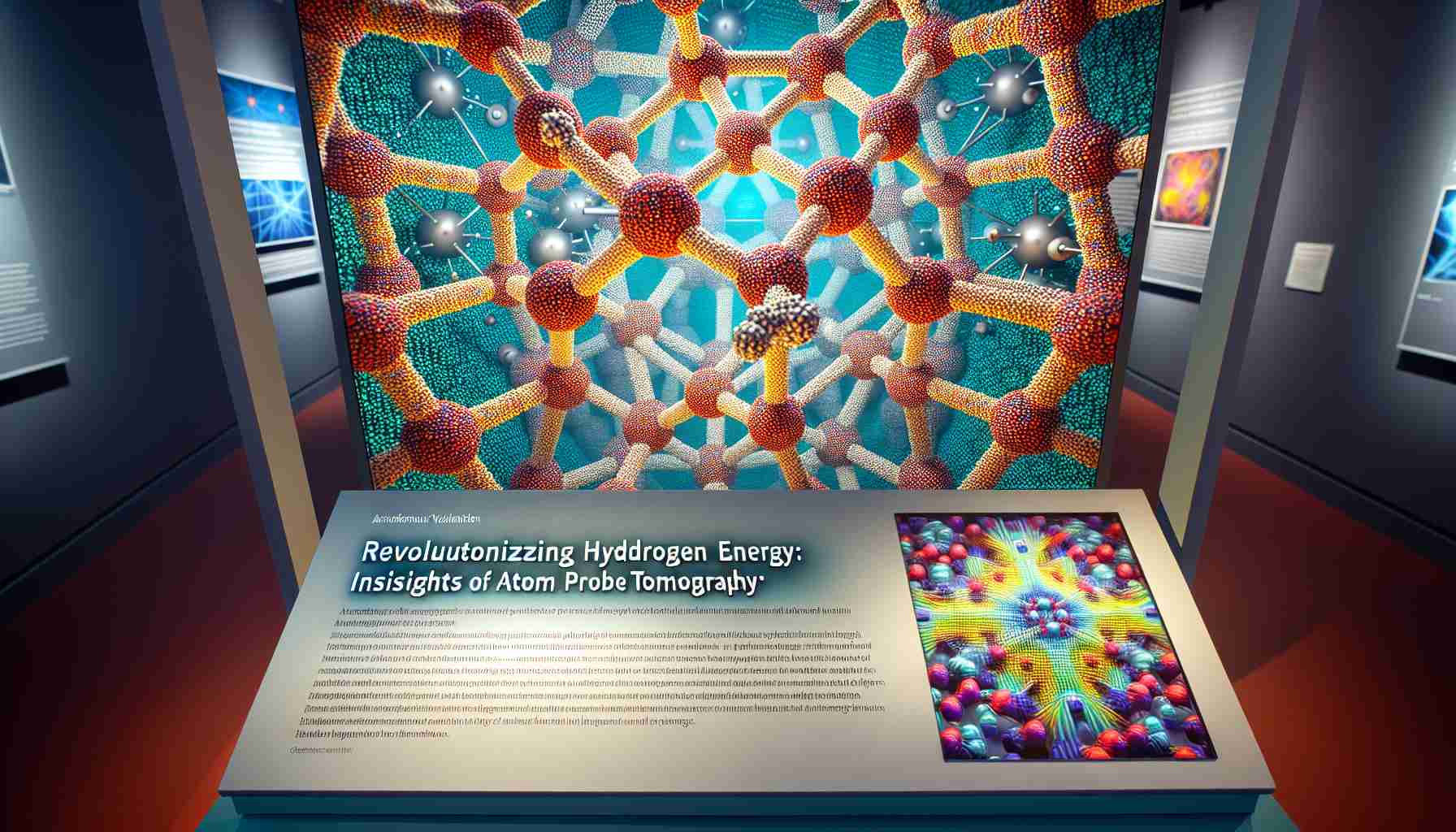A recent study utilizing atom probe tomography (APT) has uncovered groundbreaking insights into hydrogen embrittlement in X65 pipeline steel. These findings have the potential to revolutionize the field of hydrogen energy systems, offering a new approach to safe and efficient hydrogen storage and transportation.
APT, a state-of-the-art technology, provides researchers with the ability to observe and quantify hydrogen at the atomic scale within materials. By mapping the distribution and movement of hydrogen atoms, APT allows for a deeper understanding of hydrogen embrittlement, a phenomenon where hydrogen weakens materials like steel.
The study employed innovative methodologies to investigate hydrogen behavior in X65 steel. One notable approach was the use of deuterium, a stable isotope of hydrogen, as a proxy to differentiate between hydrogen introduced during sample preparation and naturally occurring hydrogen. This method improved the accuracy of measurements and provided more reliable data compared to traditional techniques.
Additionally, the study demonstrated that APT measurements could be reliably conducted at ambient temperatures, eliminating the need for complex cryogenic setups. This breakthrough makes APT more accessible and practical for various applications, paving the way for broader implementation in research and material development.
The researchers also analyzed different workflows, including specimen preparation methods and electrochemical charging conditions, to identify effective strategies for hydrogen and deuterium charging. Through these analyses, they gained insights into hydrogen accumulation, movement, and potential mitigation strategies, such as material design, surface treatments, and microstructural engineering.
This study’s unique elements, such as the use of deuterium as a proxy, the ambient transfer technique, comprehensive workflow analysis, and statistical rigor, set it apart from previous research. By advancing our understanding of hydrogen embrittlement and providing practical solutions for developing hydrogen-resistant materials, this study contributes significantly to the field.
Implementing the findings of this study has the potential to improve the safety and efficiency of hydrogen energy systems. By designing steel alloys that minimize hydrogen accumulation, applying surface treatments to reduce hydrogen penetration, and refining the microstructure to resist hydrogen movement, we can create more resilient materials for hydrogen storage and transportation.
Ultimately, these insights bridge the gap between research and real-world applications, enabling the scaling up of hydrogen energy systems and supporting the transition to a more sustainable energy future. The future of hydrogen energy looks promising with the contributions of atom probe tomography and innovative methodologies.
FAQ:
1. What is atom probe tomography (APT)?
Atom probe tomography (APT) is a state-of-the-art technology that allows researchers to observe and quantify hydrogen at the atomic scale within materials. It provides a deeper understanding of hydrogen embrittlement and other related phenomena.
2. What is hydrogen embrittlement?
Hydrogen embrittlement is a phenomenon where hydrogen atoms weaken materials such as steel. It can lead to structural failures and poses challenges in storing and transporting hydrogen.
3. How did the study utilize APT in investigating hydrogen behavior?
The study used APT to map the distribution and movement of hydrogen atoms in X65 pipeline steel. It employed innovative methodologies, including the use of deuterium as a proxy, to differentiate between introduced and naturally occurring hydrogen.
4. What were the benefits of using deuterium as a proxy?
Using deuterium, a stable isotope of hydrogen, as a proxy improved the accuracy of measurements and provided more reliable data compared to traditional techniques. It helped differentiate between introduced and naturally occurring hydrogen.
5. How did the study make APT measurements more accessible and practical?
The study demonstrated that APT measurements could be reliably conducted at ambient temperatures, eliminating the need for complex cryogenic setups. This breakthrough makes APT more accessible and practical for various research and material development applications.
6. What insights were gained from the analysis of different workflows?
The researchers analyzed different workflows, including specimen preparation methods and electrochemical charging conditions, to identify effective strategies for hydrogen and deuterium charging. This analysis provided insights into hydrogen accumulation, movement, and potential mitigation strategies.
7. How does this study contribute to the field of hydrogen energy?
By advancing our understanding of hydrogen embrittlement and providing practical solutions for developing hydrogen-resistant materials, this study significantly contributes to the field. It has the potential to improve the safety and efficiency of hydrogen energy systems.
8. How can the findings of this study be implemented?
The findings can be implemented by designing steel alloys that minimize hydrogen accumulation, applying surface treatments to reduce hydrogen penetration, and refining the microstructure to resist hydrogen movement. These strategies can create more resilient materials for hydrogen storage and transportation.
9. What are the implications of this study for the future of hydrogen energy?
The insights gained from this study bridge the gap between research and real-world applications, enabling the scaling up of hydrogen energy systems. They support the transition to a more sustainable energy future by improving the safety and efficiency of hydrogen technologies.
Definitions:
– Atom Probe Tomography (APT): A state-of-the-art technology that allows researchers to observe and quantify hydrogen at the atomic scale within materials.
– Hydrogen Embrittlement: A phenomenon where hydrogen atoms weaken materials such as steel, leading to structural failures.
– Deuterium: A stable isotope of hydrogen used as a proxy in the study to differentiate between introduced and naturally occurring hydrogen.
Suggested Related Links:
– U.S. Department of Energy Hydrogen and Fuel Cells Program
– National Renewable Energy Laboratory Hydrogen
– International Energy Agency Hydrogen
